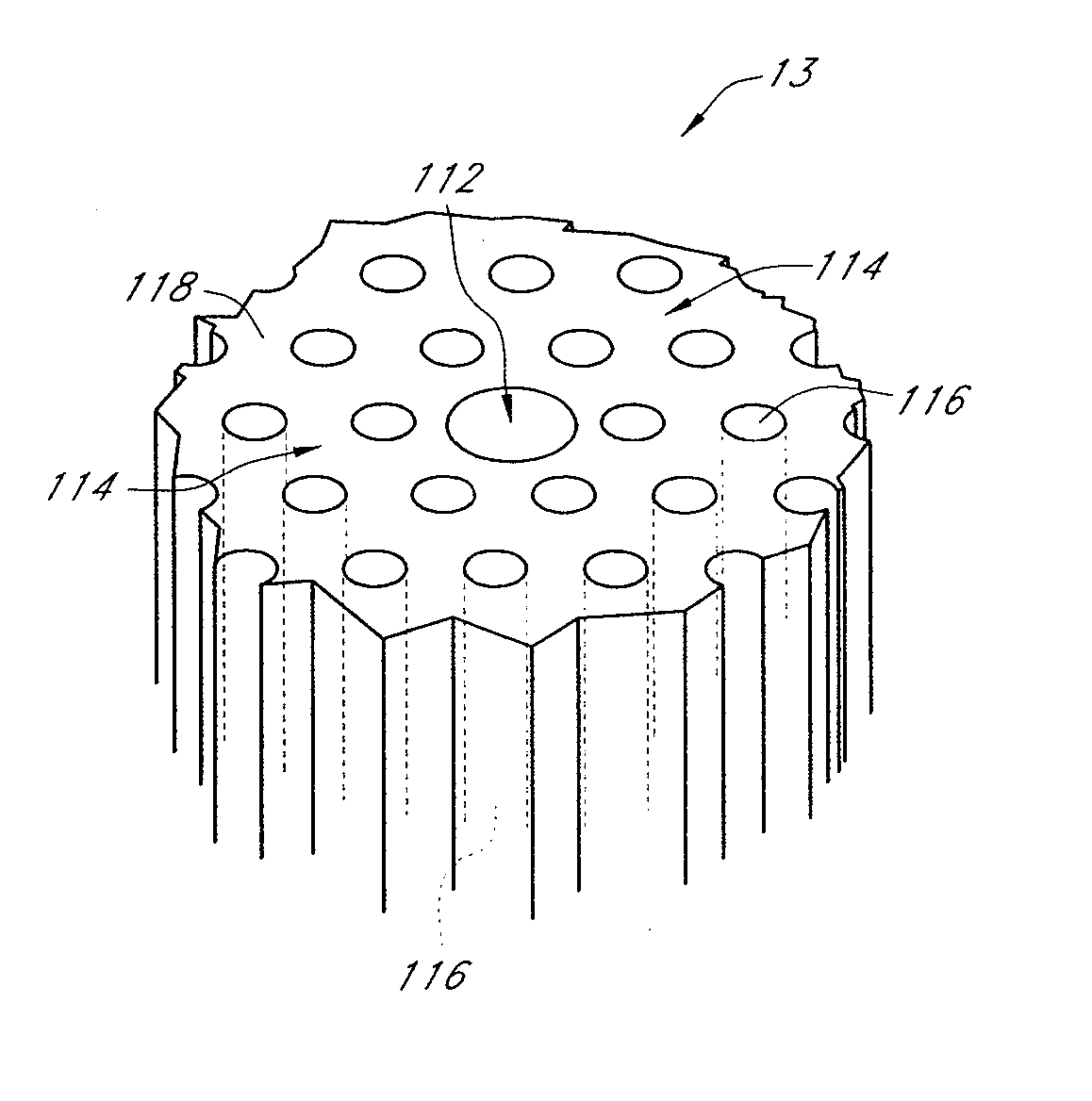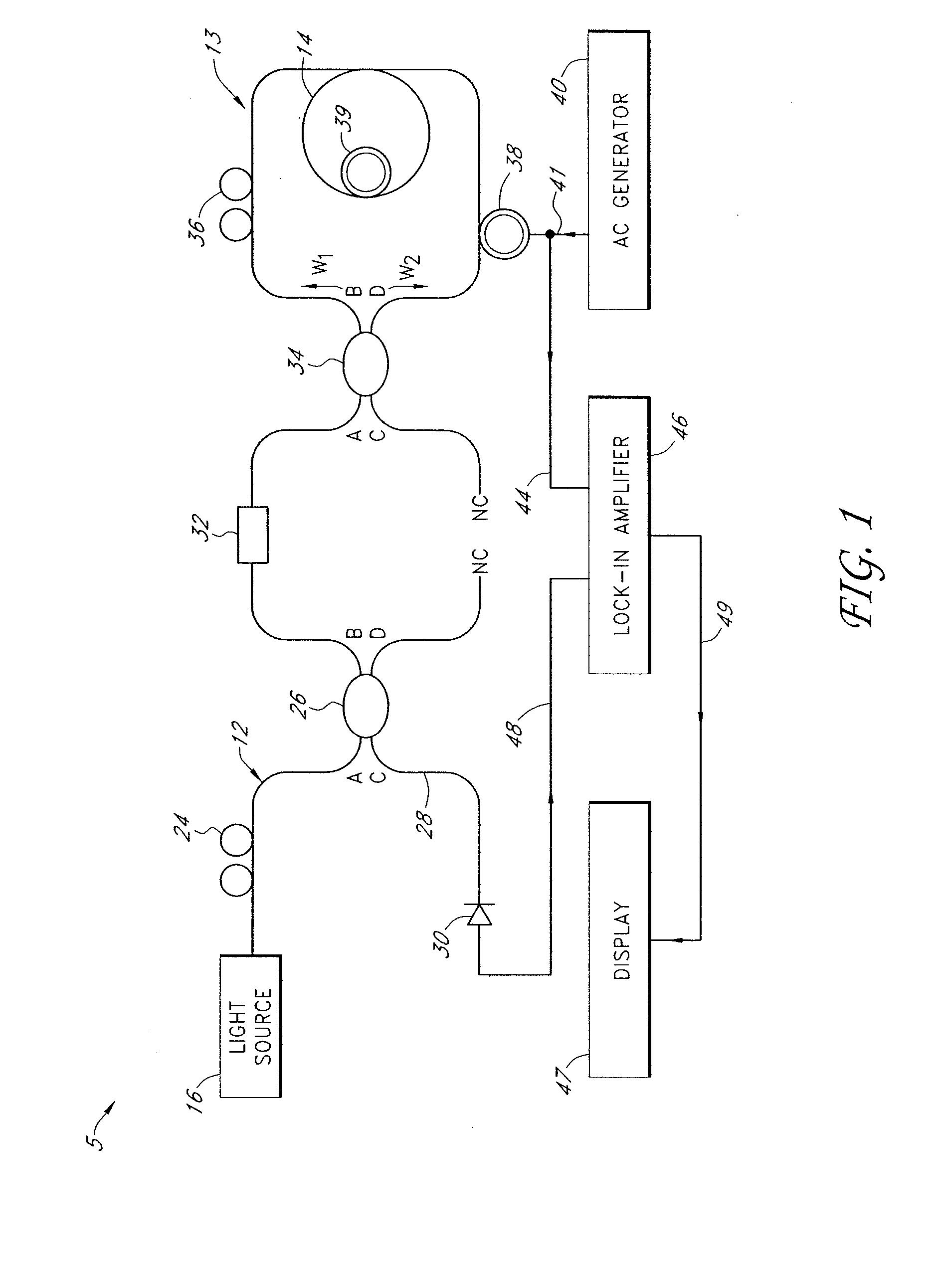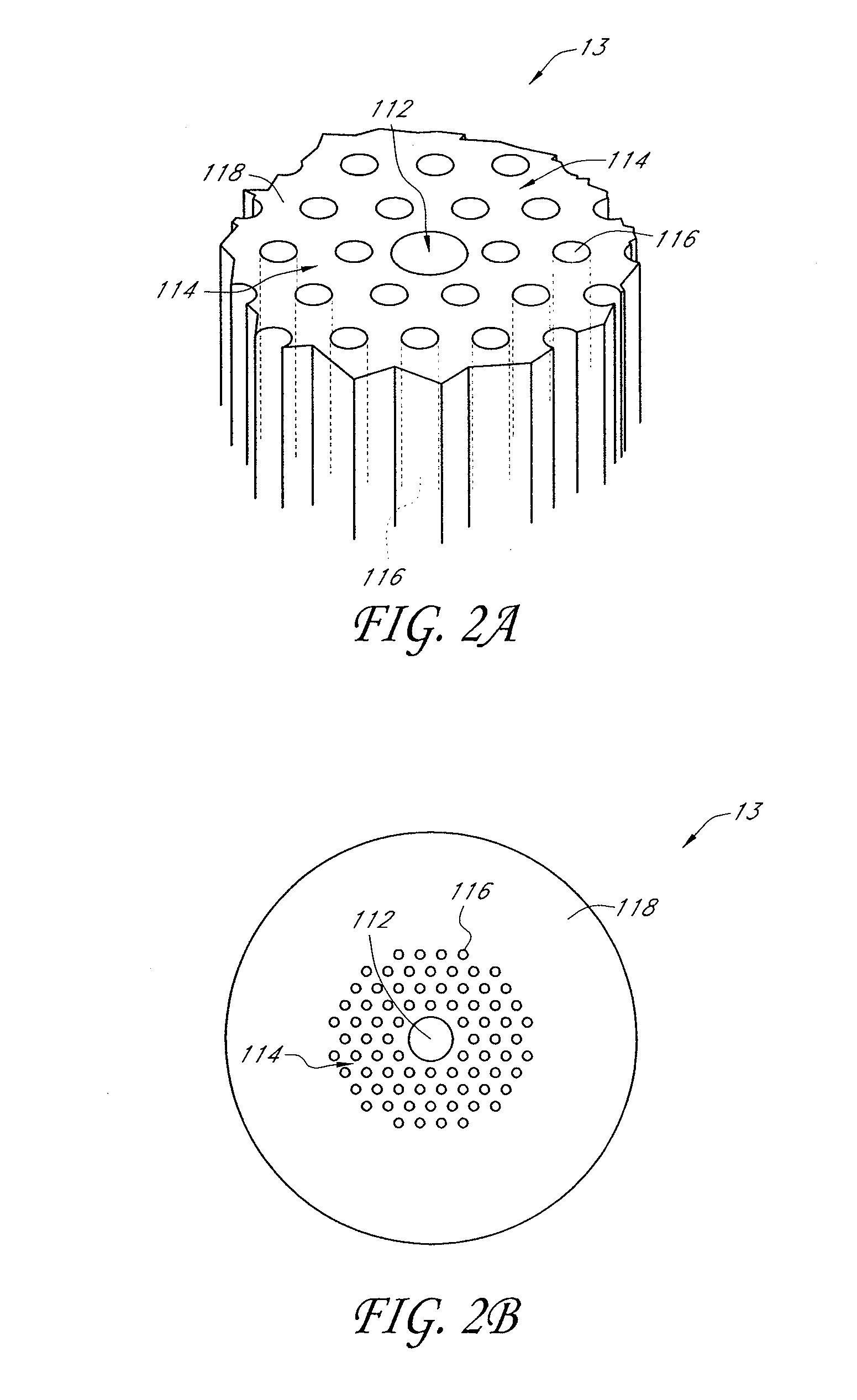Optical sensor utilizing hollow-core photonic bandgap fiber with low phase thermal constant
- Summary
- Abstract
- Description
- Claims
- Application Information
AI Technical Summary
Benefits of technology
Problems solved by technology
Method used
Image
Examples
example 1
[0112] This example describes the operation of an air-core photonic-bandgap fiber gyroscope in accordance with certain embodiments described herein. Because the optical mode in the sensing coil travels largely through air in an air-core photonic-bandgap fiber, which has much smaller Kerr, Faraday, and thermal constants than silica, the air-core photonic-bandgap fiber has far lower dependencies on power, magnetic field, and temperature fluctuations. With a 235-meter-long fiber coil, a minimum detectable rotation rate of about 2.7° / hour and a long-term stability of about 2° / hour were observed, consistent with the Rayleigh backscattering coefficient of the fiber and comparable to what is measured with a conventional fiber. Furthermore, the Kerr effect, the Faraday effect, and Rayleigh backcattering can be reduced by a factor of about 100-500, and the Shupe effect by a factor of about 3-11, depending on the fiber design.
[0113] We confirm some of these predictions with the demonstration...
example 2
[0131] This example models quantitatively the dependence of the fundamental-mode phase on temperature in an air-core fiber, and validates these predictions by comparing them to values measured in actual air-core fibers. The metric cited in this example is the relative change in phase S, referred to as the phase thermal constant, and given by Equation (4): S=1ϕⅆϕⅆT(4)
where φ is the phase accumulated by the fundamental mode through the fiber and T is the fiber temperature. With an interferometric technique, two air-core PBFs from different manufacturers were tested and found that their thermal constant is in the range of 1.5 to 3.2 parts per million (ppm) per degree Celsius, or 2.5-5.2 times lower than the measured value of a conventional SMF28 fiber (S=7.9 ppm / ° C.). Each of these values falls within 20% of the corresponding predicted number, which lends credence to the theoretical model and to the measurement calibration. This study shows that the reason for this reduction is due...
example 3
[0162]FIG. 20 schematically illustrates an example configuration for testing a fiber optic gyroscope 905 compatible with certain embodiments described herein. The sensing coil 910 comprises a Blaze Photonics air-core fiber having a length of 235 meters wound in 16 layers on an 8-centimeter-diameter spool using quadrupole winding to reduce the thermal and acoustic sensitivities of the coil 910. Each fiber layer in the coil 910 was bonded to the layer underneath it with a thin epoxy coating, and the outermost layer was also coated with epoxy. This fiber was essentially single-moded at the signal wavelength of about 1.54 microns (the few higher order modes were very lossy). The calculated scale factor of this coil 910 was 0.255 s. Light from a broadband Er-doped superfluorescent fiber source (SFS) 920 was isolated by isolator 922, transmitted through a polarization controller (PC1) 924, and split by a 3-dB fiber coupler before being coupled to a fiber-pigtailed LiNbO3 integrated optica...
PUM
 Login to View More
Login to View More Abstract
Description
Claims
Application Information
 Login to View More
Login to View More - R&D
- Intellectual Property
- Life Sciences
- Materials
- Tech Scout
- Unparalleled Data Quality
- Higher Quality Content
- 60% Fewer Hallucinations
Browse by: Latest US Patents, China's latest patents, Technical Efficacy Thesaurus, Application Domain, Technology Topic, Popular Technical Reports.
© 2025 PatSnap. All rights reserved.Legal|Privacy policy|Modern Slavery Act Transparency Statement|Sitemap|About US| Contact US: help@patsnap.com



